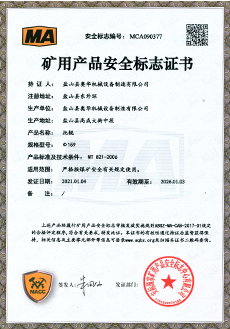 Afrikaans
Afrikaans  Albanian
Albanian  Amharic
Amharic  Arabic
Arabic  Armenian
Armenian  Azerbaijani
Azerbaijani  Basque
Basque  Belarusian
Belarusian  Bengali
Bengali  Bosnian
Bosnian  Bulgarian
Bulgarian  Catalan
Catalan  Cebuano
Cebuano  Corsican
Corsican  Croatian
Croatian  Czech
Czech  Danish
Danish  Dutch
Dutch  English
English  Esperanto
Esperanto  Estonian
Estonian  Finnish
Finnish  French
French  Frisian
Frisian  Galician
Galician  Georgian
Georgian  German
German  Greek
Greek  Gujarati
Gujarati  Haitian Creole
Haitian Creole  hausa
hausa  hawaiian
hawaiian  Hebrew
Hebrew  Hindi
Hindi  Miao
Miao  Hungarian
Hungarian  Icelandic
Icelandic  igbo
igbo  Indonesian
Indonesian  irish
irish  Italian
Italian  Japanese
Japanese  Javanese
Javanese  Kannada
Kannada  kazakh
kazakh  Khmer
Khmer  Rwandese
Rwandese  Korean
Korean  Kurdish
Kurdish  Kyrgyz
Kyrgyz  Lao
Lao  Latin
Latin  Latvian
Latvian  Lithuanian
Lithuanian  Luxembourgish
Luxembourgish  Macedonian
Macedonian  Malgashi
Malgashi  Malay
Malay  Malayalam
Malayalam  Maltese
Maltese  Maori
Maori  Marathi
Marathi  Mongolian
Mongolian  Myanmar
Myanmar  Nepali
Nepali  Norwegian
Norwegian  Norwegian
Norwegian  Occitan
Occitan  Pashto
Pashto  Persian
Persian  Polish
Polish  Portuguese
Portuguese  Punjabi
Punjabi  Romanian
Romanian  Russian
Russian  Samoan
Samoan  Scottish Gaelic
Scottish Gaelic  Serbian
Serbian  Sesotho
Sesotho  Shona
Shona  Sindhi
Sindhi  Sinhala
Sinhala  Slovak
Slovak  Slovenian
Slovenian  Somali
Somali  Spanish
Spanish  Sundanese
Sundanese  Swahili
Swahili  Swedish
Swedish  Tagalog
Tagalog  Tajik
Tajik  Tamil
Tamil  Tatar
Tatar  Telugu
Telugu  Thai
Thai  Turkish
Turkish  Turkmen
Turkmen  Ukrainian
Ukrainian  Urdu
Urdu  Uighur
Uighur  Uzbek
Uzbek  Vietnamese
Vietnamese  Welsh
Welsh  Bantu
Bantu  Yiddish
Yiddish  Yoruba
Yoruba  Zulu
Zulu Efficient Techniques for Cleaning Conveyor Belts in Industrial Settings
The Importance of Cleaning Conveyor Belts Best Practices and Benefits
Conveyor belts are an integral part of many manufacturing and logistics operations, efficiently transporting materials and products within a facility. However, the performance and longevity of these critical systems depend heavily on proper maintenance, particularly cleaning. Regular cleaning of conveyor belts not only enhances their efficiency but also ensures compliance with safety regulations and promotes a hygienic environment. In this article, we will explore effective cleaning practices and the numerous benefits of maintaining clean conveyor belts.
Importance of Cleaning Conveyor Belts
Conveyor belts can accumulate various contaminants, including dirt, dust, grease, and even food particles in food processing environments. These contaminants can lead to several issues
1. Decreased Efficiency Build-up on conveyor belts can cause friction, leading to increased wear and tear on the belt and associated machinery. This can result in slower operations and increased energy consumption.
2. Quality Control In industries like food processing, contaminants can compromise product quality. Cleaning ensures that goods remain uncontaminated, complying with industry regulations and maintaining consumer trust.
3. Safety Hazards Accumulated debris can pose safety risks, such as slips and falls or equipment malfunctions. Regular cleaning reduces these hazards, contributing to a safer workplace.
4. Extended Equipment Lifespan A clean conveyor belt is less likely to suffer from wear and tear. By reducing the risk of damage, regular cleaning can significantly extend the lifespan of the equipment.
Best Practices for Cleaning Conveyor Belts
cleaning of conveyor belt

To maximize the benefits of cleaning, it's essential to adopt effective practices. Here are some best practices for maintaining clean conveyor belts
1. Regular Cleaning Schedule Establish a regular cleaning schedule that considers the specific operational environment of the conveyor belt. High-traffic areas or those handling food products may require more frequent cleaning.
2. Use Appropriate Cleaning Agents Choose cleaning agents that are suitable for the materials being transported and compatible with the conveyor belt. It’s crucial to avoid harsh chemicals that could damage the belt or leave harmful residues.
3. Employ Proper Cleaning Techniques Use the correct cleaning techniques such as scrubbing, washing, and sanitizing. For instance, rotary brushes can effectively remove stubborn dirt, while high-pressure water sprays can help in rinsing away residues.
4. Conduct Inspections Regularly inspect the conveyor system for any signs of wear, damage, or contamination. Early detection can prevent more significant issues and reduce downtime.
5. Train Employees Ensure that personnel involved in the cleaning process are properly trained. They should understand the importance of cleaning, the proper techniques to use, and safety procedures to follow.
6. Utilize Technology Consider investing in automated cleaning systems or solutions that can help streamline the cleaning process and reduce labor costs while ensuring a thorough clean.
Conclusion
Cleaning conveyor belts is not an option but a necessity for any operation using these vital systems. By adopting best cleaning practices, businesses can enhance the efficiency and safety of their operations while ensuring product quality. The benefits of a clean conveyor belt extend beyond the immediate operational advantages—they foster a safer workplace, promote compliance with regulations, and ultimately lead to satisfied customers. Investing time and resources in proper cleaning protocols is a crucial step in sustaining continuous operation and achieving long-term success in any industry.
-
Taper Centering Idler Set for Conveyor SystemsNewsJun.25,2025
-
Small Idler Rollers for Industrial ConveyorsNewsJun.25,2025
-
Guide Training Idler Set for Conveyor MaintenanceNewsJun.25,2025
-
Friction Offset Idler Set for Industrial UseNewsJun.25,2025
-
Double-Center-Roller Idler AlignmentNewsJun.25,2025
-
Channel Inset Impact Troughing Idler Set for Heavy LoadsNewsJun.25,2025





























